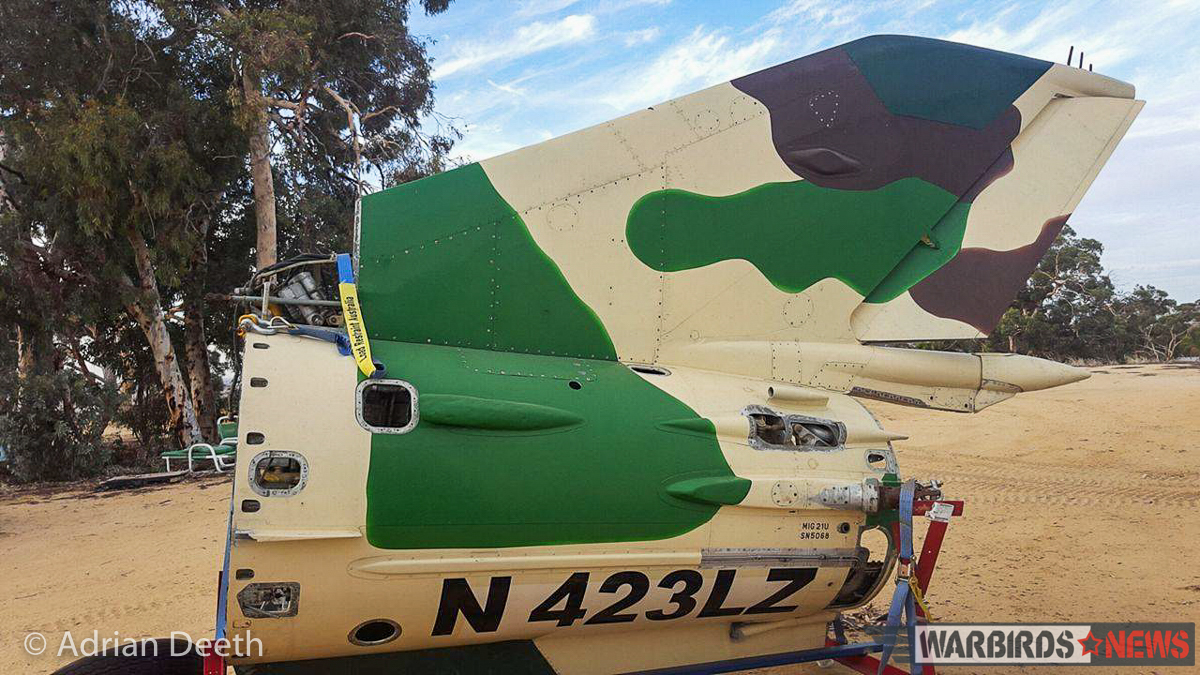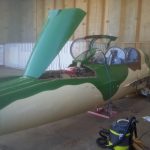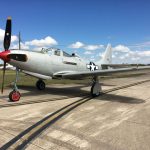by Phil Buckley
Last year WarbirdsNews revealed the West Australian MiG-21U project belonging to jet warbird enthusiast, Adrian Deeth. As some may recall, Adrian’s jet is a twin seater trainer version of the famous Soviet fighter, and will be fifty years old in 2016. Formerly operated by the Egyptian Air Force it entered the civilian warbird world first in the USA based, before making the long journey to Australia three years ago. Our initial report covered the project’s history, storage and future plans. Nearly a year on, we have recently got back in touch with Adrian Deeth to see how things have progressed, and what his immediate plans are with the jet.
History
As a brief recap of the aircraft’s history, Deeth’s aircraft is MiG-21U, a two-seat trainer known in the West by its NATO callsign, ‘Mongol-B’. She rolled off the Soviet production line as serial number 666002319 in 1966. She was part of a batch destined for export and service with the Egyptian Air Force, taking up that role in 1967. While many warbird enthusiasts might see few variations between the MiG-21U and MiG-21U sub-types, there are several significant changes which include a different engine, avionics, cockpit setup and ejections seats, among other things. Another feature separating the two models is that later 2nd generation 600-series MiG-21UMs had broader chord vertical stabilizers in comparison to their predecessors.
Once delivered to the Egyptian Air Force, the jet became an advanced pilot trainer, a role it performed until 1983. The Mongol-B prepared pilots to fly the single-seat, fighter versions of the MiG-21 then in frontline service with their country. Despite operating as a trainer for sixteen years, the jet has actually accrued very few flight hours overall, with roughly 400 on its logs.
After the Egyptian Air Force finished flying the jet, she sat in storage for the following decade before the warbird market came calling. She moved to the USA in 1993 with a civilian owner who intended to restore her back to flying condition. Work proceeded quickly, as the MiG was back in the air again during 1994, listed as N423LZ on the US registry. The records show that she received a new Tumansky R-11F-300 jet engine in 1997, however Russian jet engines of this vintage are not known for long service lives, unlike their Western counterparts. Such was the case for the newly installed Tumansky, as it ran for just eight flight hours before that owner grounded the aircraft in 1998, and she has yet to fly again.
Meanwhile over in Australia, Adrian Deeth, a keen aviation enthusiast with a big interest in Russian Cold War jets, followed his passion and purchased a pair of MiG-21Us in 2012. He purchased N423LZ, the subject of this article, from the USA along with another MiG-21U from Poland as a parts bird. As discussed in our previous article, Deeth imported N423LZ into Australia in 2014. The former Egyptian Air Force jet wears a camouflage paint scheme reminiscent of her original livery, although without any national insignia or squadron markings. Her tail still bears her US registration number N423LZ along with a stencil marking reflecting her construction number, 5068, and aircraft type designator.
Moving A Cold War Warrior
On February 4th, 2016, WarbirdNews correspondent Phil Buckley received an invitation from Adrian Deeth to join him as he transported the MiG from her old home in Perth to a country airport near York about 80km away. Deeth had found much more affordable hangar space at the wonderfully-named White Gum Farm airstrip, which prompted the move. So Deeth and a few friends hoiked the disassembled jet aboard a low-loader truck, and meandered their way through suburban streets of Perth in the middle of the day; the last thing office workers and drivers might have expected to see! As this angular and brutal looking 60s warrior progressed on her way, many people stared in disbelief at the fantastical sight.
Restoration Plans
With the major move now behind him, Deeth has already begun an in-depth overhaul of his jet. He will be doing it mostly by himself, as he has a great deal of experience in the requisite skills. Obviously, any work performed will require certification by a licensed engineer too.
Key checks Adrian Deeth will need to perform –
1: Check for any major structural problems.
2: Replace some damaged fuselage panels.
3: Replace any outdated Soviet avionics with more modern Western systems.
4: Install a new radio system.
5: Remove all panels to inspect for corrosion and repairs as required.
6: Cycle the landing gear (on the ground) to verify that it is functioning properly.
7: Overhaul the engine.
8: Inspect and repair the wiring as necessary.
9: Replace the two SK-1 ejection seats which mysteriously disappeared while the aircraft was in storage.
10: Strip the old paint and possibly replace it with the original markings it wore in Egyptian service.
Like other fast jet warbirds of it class, once the MiG is operational again, Adrian Deeth’s long term goal is to make the jet a viable business operation. He hopes to offer a jet experience with a difference though, that of supersonic flight. While these plans are still in formation and haven’t formally been approved by the Australian aviation authorities, Deeth would like to operate the MiG-21 off western Perth, out over the Indian Ocean in a restricted military training area (though clearly not when the military is using it). Various types of adventure flights will be available which will put the aircraft through high g force manoeuvres and supersonic runs. Flying the MiG at such speeds out over the ocean will minimize any effects that sonic booms would have over the mainland, and yet still allow a passenger the raw thrill that flying in a fast jet at the peak of its capabilities can bring with a minimum of risk to all concerned. It will certainly be a remarkable opportunity should Mr.Deeth succeed, and we wish him well in his endeavors. We will be sure to present future updates on this fascinating project as they come in. WarbirdsNews wishes to thank Adrian Deeth for bringing us along on his adventures.
————————–
WarbirdsNews would like to thank Phil Buckley for his fascinating report and photographs. We hope you enjoy reading through as much as we did!






































